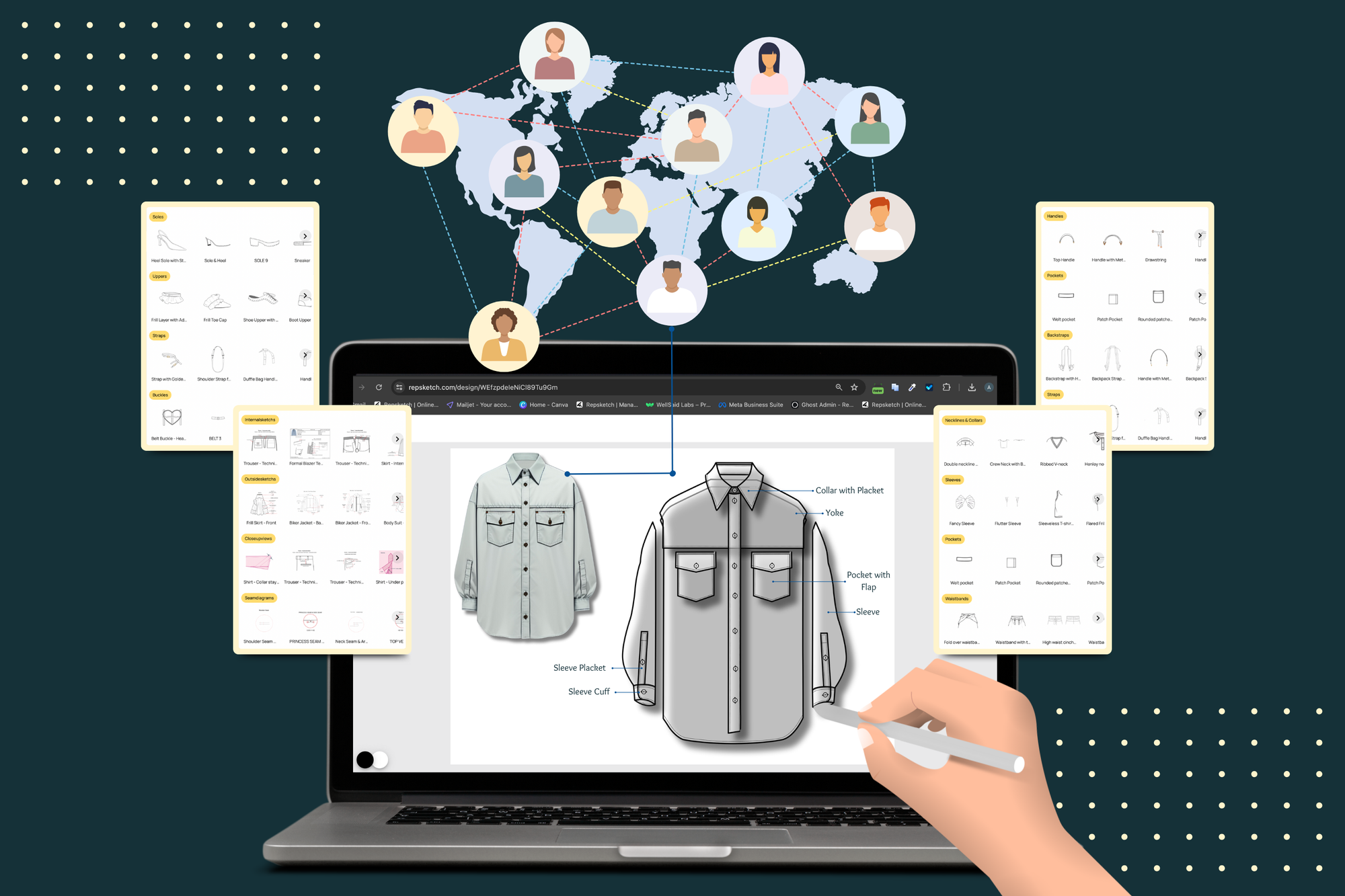Contents
Open source libraries have sparked transformation across industries by encouraging collaboration, innovation, and efficiency. And now, they’re set to do the same for fashion design. Imagine having access to a treasure trove of pre-made templates, technical sketches, and design tools—all created and shared by designers like you. Embracing open-source resources means more time for creativity, less time reinventing the wheel, and a chance to align with sustainable design practices. In this blog, let’s explore why open source libraries are becoming essential for modern fashion design.
Breaking Down Barriers in Fashion Design
The global fashion supply chain has evolved rapidly. From AI-driven inventory forecasting to blockchain-based tracking, innovation is everywhere. Yet, within design and product development, progress has been slower. Despite recent steps towards 3D technology and virtual prototyping, most design processes remain fragmented and exclusive. Designers still work in silos, and there’s limited opportunity for reusability or sharing, which leads to inefficiencies and repeated efforts.
Real-World Impact of Slow Design Processes
- Average Time-to-Market: Fast fashion brands target 4-6 weeks, but traditional methods in design can extend this timeframe.
- Resource Constraints: McKinsey's various analyses of the fashion industry, especially in reports like The State of Fashion, emphasize high initial costs during design and prototyping phases, noting the intense resource allocation and innovation demands faced by brands.
- Example: A designer developing a technical sketch often has to start from scratch, even if similar components or templates exist elsewhere in the industry. This results in significant wasted time and resources.
Learning from the Success of Open Source in Tech
In the tech industry, open-source libraries have reshaped the landscape, making software development more collaborative, accessible, and efficient. Platforms like GitHub allow developers to share code, build on each other's work, and innovate faster. This collaborative model has proven to be immensely beneficial, enabling:
- Reuse of Code: Developers access extensive libraries of pre-written code snippets, minimizing the need to build basic functionalities from scratch.
- Community Collaboration: Open-source platforms encourage developers to contribute, share fixes, and improve software collectively, creating a shared ecosystem of knowledge and innovation.
The impact of blockchain in technology has also influenced open-source ecosystems, enabling transparent and decentralized sharing of resources, ensuring security and trust in the contributions made by developers.
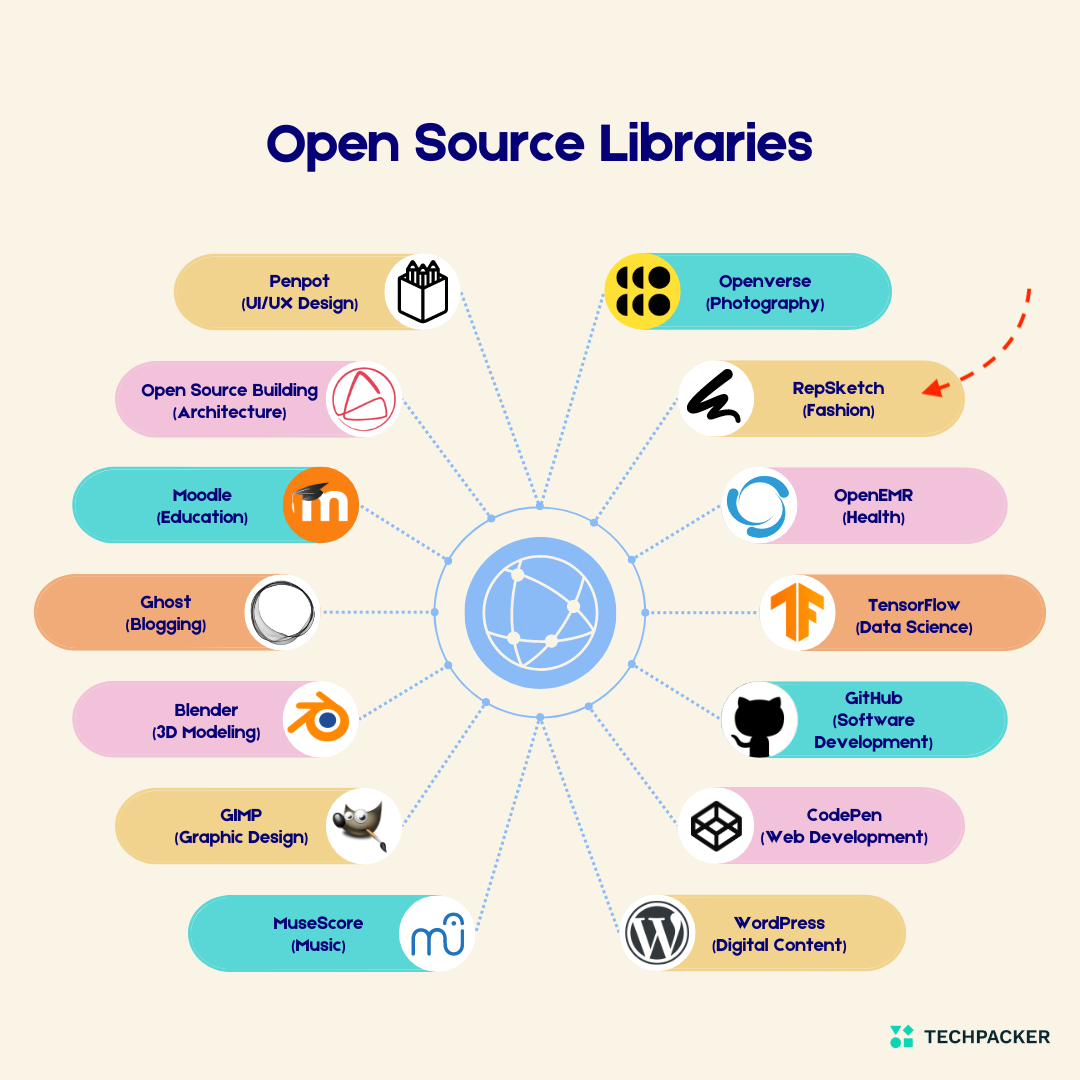
Specific platforms illustrate this impact across creative fields. CodePen, for instance, enables developers to share and repurpose code snippets, saving time and resources on foundational work. Ghost revolutionized content creation by providing an open-source, customizable publishing platform that simplifies blogging. In design, Penpot offers a collaborative, open-source prototyping tool that allows for the rapid creation and sharing of user interfaces, saving designers time in iterative processes.
Similarly, in architecture, Open Source Building grants access to architectural plans, fostering global collaboration and reducing repetitive design efforts. And in photography, Openverse (formerly CC Search) offers a large repository of openly licensed images, saving photographers the need to source and license visuals repeatedly.
These examples underscore the efficiency and innovation that open-source libraries enable—benefits that could significantly impact the fashion industry by fostering resource-sharing, collaboration, and faster design development. Moreover, blockchain technology could further enhance these platforms by ensuring secure, traceable, and transparent transactions of shared resources.
Open Source in Fashion: A Paradigm Shift
Imagine if, as a designer, you could browse a library filled with vector templates, technical sketches, and patterns, ready for you to build on. No need to start every design from scratch—just find a foundation, adapt it, and make it your own.
But currently, fashion industry has its pain points:
- Lack of Standardization: Each brand has unique templates and processes, limiting compatibility and reusability.
- Exclusive Design Silos: Collaboration is limited; designers seldom share their work due to proprietary concerns.
- Start-from-Scratch Mentality: Resources are rarely reused or repurposed, increasing costs and production times.
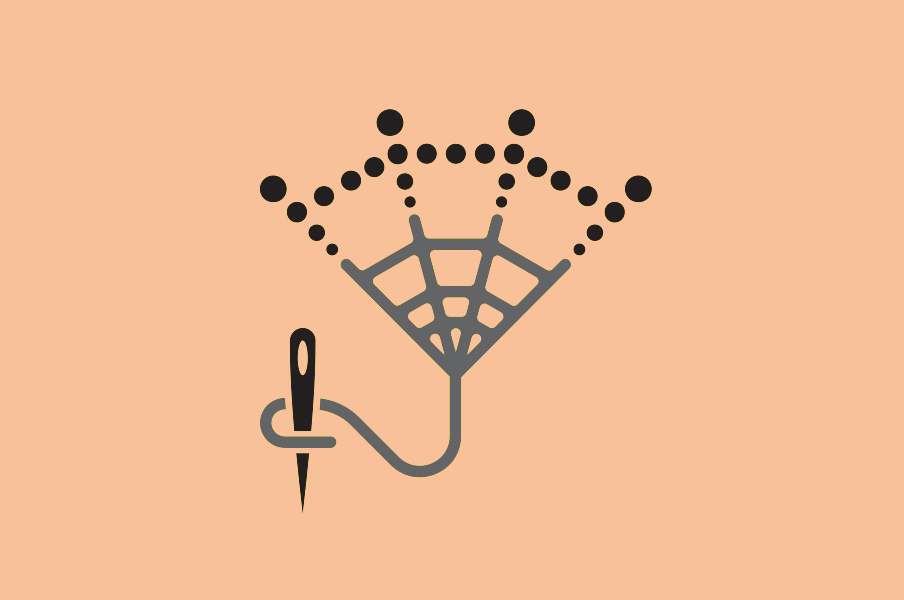
Benefits of Open Source Library in Fashion Industry
By embracing open-source libraries for fashion sketches, designers can transform their workflow.

Time-Saving
- Pre-Existing Resources: Access to a wide array of ready-made sketches, patterns, and templates eliminates the need to start from scratch, speeding up the design process.
- Rapid Iteration: Designers can quickly modify and adapt existing sketches to meet new trends or client demands, allowing for faster product development.
- Streamlined Workflow: Integrated tools and standardized formats simplify the workflow from initial concept to final design, reducing overall development time.
- Efficient Collaboration: Shared resources enable smoother collaboration among design teams, minimizing delays and redundancies.
Cost-Effective
- Reduced Development Costs: By utilizing existing resources, designers can significantly cut down on the costs associated with creating new designs from scratch.
- Lower Software Expenses: Many open source tools and libraries are available for free, reducing the need for expensive proprietary software.
Fostering Creativity
- Inspiration Source: A diverse collection of designs and patterns serves as a rich source of inspiration, encouraging designers to explore new styles and ideas.
- Freedom to Experiment: Access to various templates and digital tools allows designers to experiment with different ideas without the fear of wasting resources.
- Collaborative Innovation: Open source libraries create a collaborative environment where designers can contribute to and benefit from collective creativity, leading to unique and innovative designs.
- Customization and Flexibility: Designers can personalize and adapt existing sketches to create original pieces, enhancing their creative expression.
Enhancing Quality and Innovation
- Standardization: Libraries often incorporate best practices and standardized approaches, ensuring consistent quality across designs.
- Continuous Improvement: The collaborative nature of open source allows for continuous updates and improvements, keeping tools and resources current with industry trends.
By leveraging open source libraries, the fashion industry can enhance efficiency, reduce costs, foster creativity, and drive innovation in the design process. Blockchain can further streamline this by tracking ownership and ensuring the authenticity of contributions made by designers.
What is an Open Source Library?
An open-source library is a collection of community-shared resources that are free to access, modify, and distribute. In tech, these libraries are the backbone of most software applications; in fashion, they could mean a library of vector templates, CAD files, patterns, and color palettes accessible to any designer. Here’s how they work:
- Free Access: Designers can explore and use designs created by others, speeding up ideation and prototyping.
- Modifiable Resources: Templates and sketches can be modified, allowing designers to create unique products quickly.
- Community Contribution: Designers contribute back to the library, enriching it with new ideas and fostering collaboration.
- Blockchain Integration: Blockchain technology ensures transparency and traceability of contributions, creating a secure and trusted ecosystem for shared design resources.
Open source libraries reduce repetitive processes by offering accessible and reusable resources that streamline development and design workflows. These libraries provide existing code, patterns, templates, and tools, enabling users to:

- Accelerate Development: Utilize existing resources instead of starting from scratch, saving time on basic functionalities and standard components.
- Promote Standardization: Ensure consistency and quality by adhering to best practices embedded in open source libraries.
- Encourage Collaboration: Foster a collaborative environment where improvements and enhancements are collectively contributed.
- Cut Costs and Resources: Lower development costs by minimizing the need for internal development of common solutions.
- Enable Innovation: Free up time for creative problem-solving and innovative projects by reducing routine tasks.
RepSketch: Bringing Open Source to Fashion
RepSketch, a vector design tool for fashion, has brought open-source principles into the fashion industry. RepSketch offers a community-driven library of templates, technical sketches, and design resources. Designers of all skill levels can find, modify, and share fashion sketches—fostering an environment where everyone benefits from each other’s creativity.
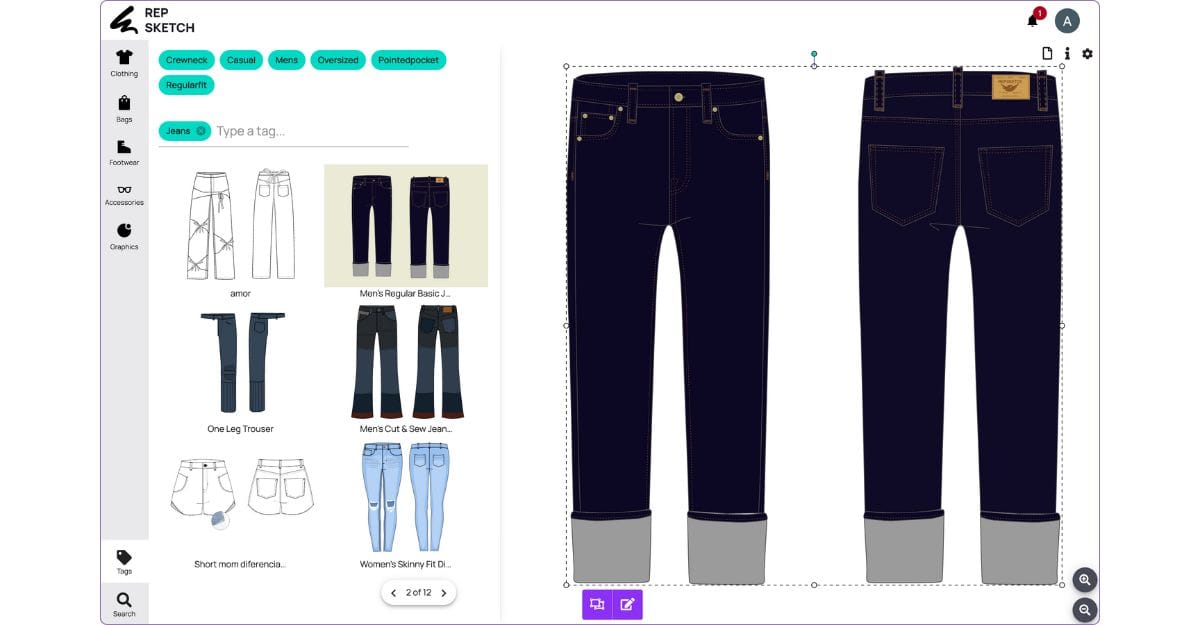
"We decided to challenge this paradigm for product designers by taking the first-step and opening our libraries by sharing our designs and vector sketches for anyone to repurpose them and rather than reinventing, build on top of the excellence." says Saral Kochar, RepSketch's Co-Founder
Transforming Ideas with RepSketch’s Intuitive Tools
RepSketch gives you the tools to support your entire creative journey, from the first sketch to 3D visualizations. You can start with repurposing any sketch and refine it using Repsketch's simple, intuitive tools that let you experiment and build your vision with ease. Whether you’re adjusting design elements or trying out new ideas, the platform’s flexibility makes it easy to bring your concepts to life.
With RepSketch’s integration into 3D modeling software, you can turn your 2D sketches into 3D visualizations. This adds depth and perspective, so you’ll get a clearer, more accurate view of how your designs will look in real life. It’s not just a great way to refine your designs—it also helps you present your ideas with confidence, allowing you to make decisions and tweaks at every stage.
A Community-Driven Design Ecosystem
RepSketch thrives because of its community-driven model, where collaboration and creativity are at the core. You’ll find a diverse library of vector sketches and templates, all contributed by designers from around the world. This gives you a wealth of inspiration and references to explore, making it easy to build on your ideas without starting from scratch.
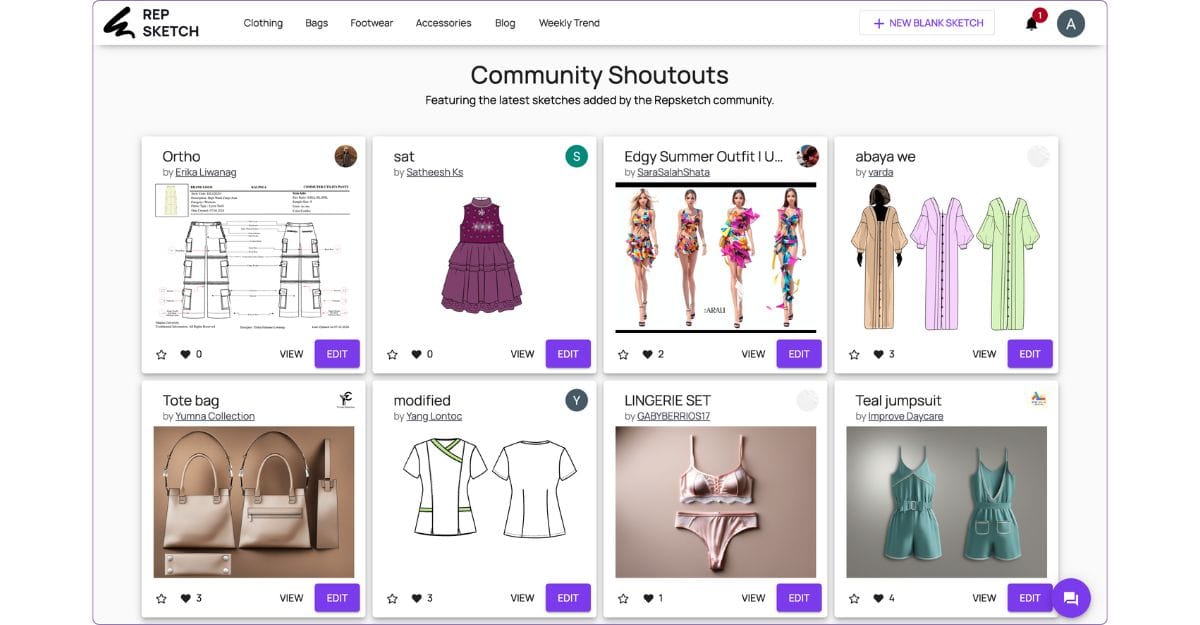
"I think there should be more sharing methods like this... The fashion world definitely needs to embrace this model. It would be wonderful for everyone!" says Luiza Schommer, a designer using RepSketch.
By sharing your own designs, you help grow the platform and keep it in tune with the latest industry trends and evolving needs. With contributions from users like you, RepSketch stays dynamic and responsive, offering new styles, techniques, and trends to fuel your creativity.
Repurposable Resources for Sustainable Design
RepSketch’s open-source model isn’t just efficient; it also aligns with sustainable practices. Instead of creating new resources each time, you can build on existing designs, reducing both time and material waste. Similar to how CodePen and GitHub support reuse in tech, RepSketch encourages the repurposing of fashion templates, promoting an eco-friendly approach to design.

How RepSketch Works: Key Features and Benefits
- Template Library: You’ll find an extensive collection of templates, technical sketches, and other resources to speed up your workflow and eliminate repetitive tasks.
- User Contribution: The collaborative environment lets you contribute your designs, which others can use, modify, or draw inspiration from.
- Customization Options: With RepSketch’s editing tools, you can easily adjust templates to fit your specific design vision, from color changes to detailed edits.
- Support for All Skill Levels: Whether you’re just starting out or a seasoned designer, you’ll find something for you—guides and an intuitive interface for beginners, and advanced features like layering and pattern creation for more polished results.
RepSketch combines open-source accessibility with community collaboration, giving you the flexibility, functionality, and efficiency needed to bring your innovative ideas to life.
A Community of Collaboration and Growth
As more designers join the RepSketch community, the library keeps expanding, giving everyone more resources to work with. The fashion industry is starting to see how open-source libraries can transform the design process. From speeding up lead times to sparking more innovation, this collaborative approach is already reshaping the industry. Here’s how these resources are making a difference:
- Faster Design Cycles: You’ll be able to bring your ideas to life faster by building on existing sketches and templates, speeding up your creative process.
- Sustainability: Open-source libraries help reduce the need for new resources with each design, supporting eco-friendly fashion practices that more consumers are demanding.
- Increased Creativity: With access to diverse resources, you can experiment more freely, leading to even more innovative designs.

And for creators worried about credit, RepSketch cares about intellectual property rights and ethical design practices. It ensures original creators get proper credit when their sketches or templates are used, modified, or repurposed by others. With clear attribution guidelines and visibility for contributors, you’ll find a respectful and appreciative culture within the community. This helps create a collaborative space where designers can freely share and build on each other’s work.
Real-Life Examples and Community Impact
Benefiting from Community Contributions: RepSketch gives designers access to a wide range of vector sketches and templates, saving time and money. One designer used customized templates to speed up their collection creation, while another grew their portfolio without hiring extra artists.
"The community has increased my passion for design and expanded my visual vision, stimulating my mind to produce innovative designs." says Sara Salah Shata, a designer using RepSketch.
Success Stories with RepSketch in Fashion Design: RepSketch helps brands launch apparel faster with high-quality sketches. Designer Luiza’s success story shows how using shared resources can accelerate the design process and spark creativity. Read more about her journey here.
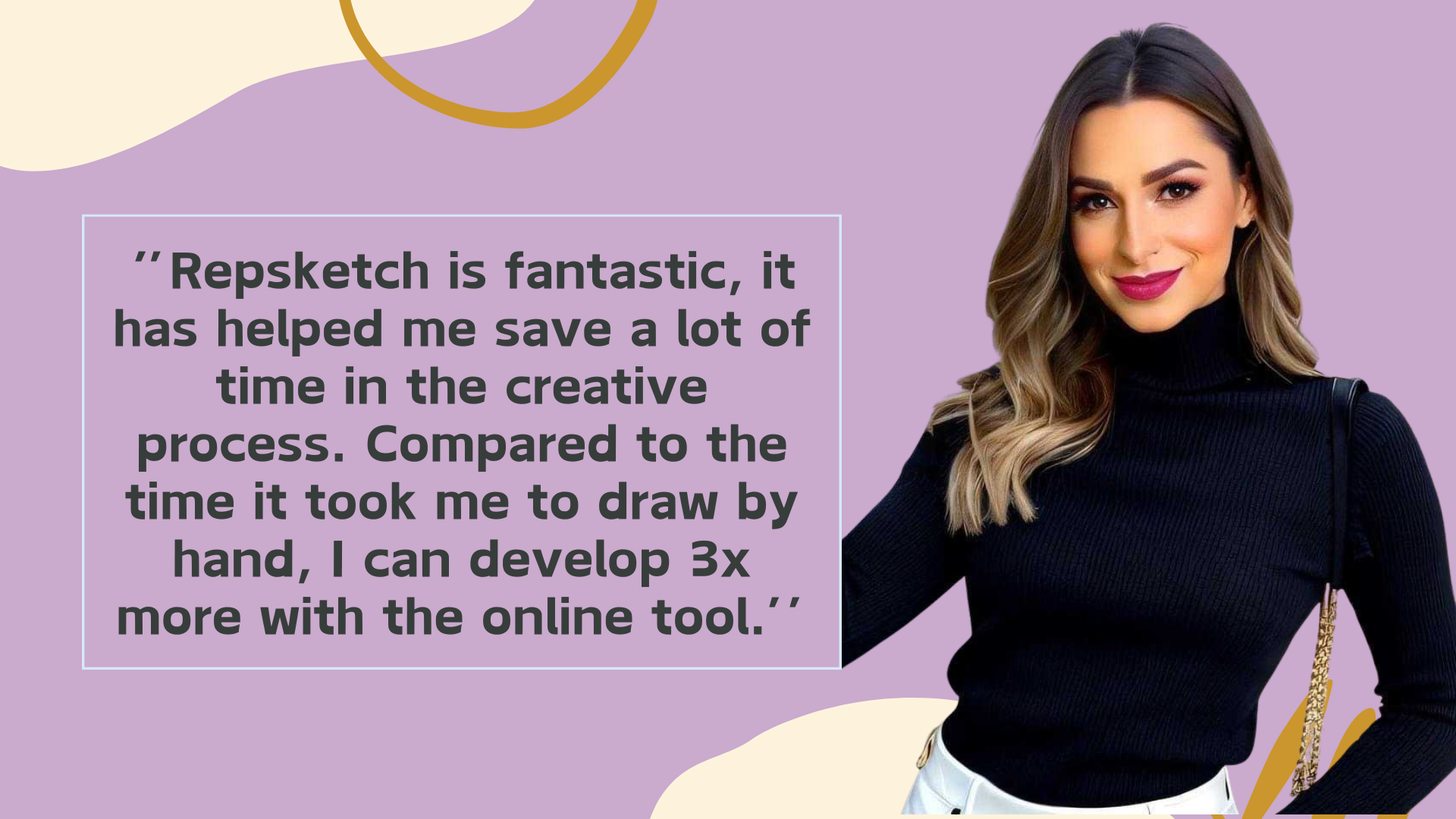
Testimonials on RepSketch’s Impact: Designers appreciate RepSketch for its easy-to-use interface and collaborative vibe, with many noting how it has boosted their creativity and career growth in digital fashion.
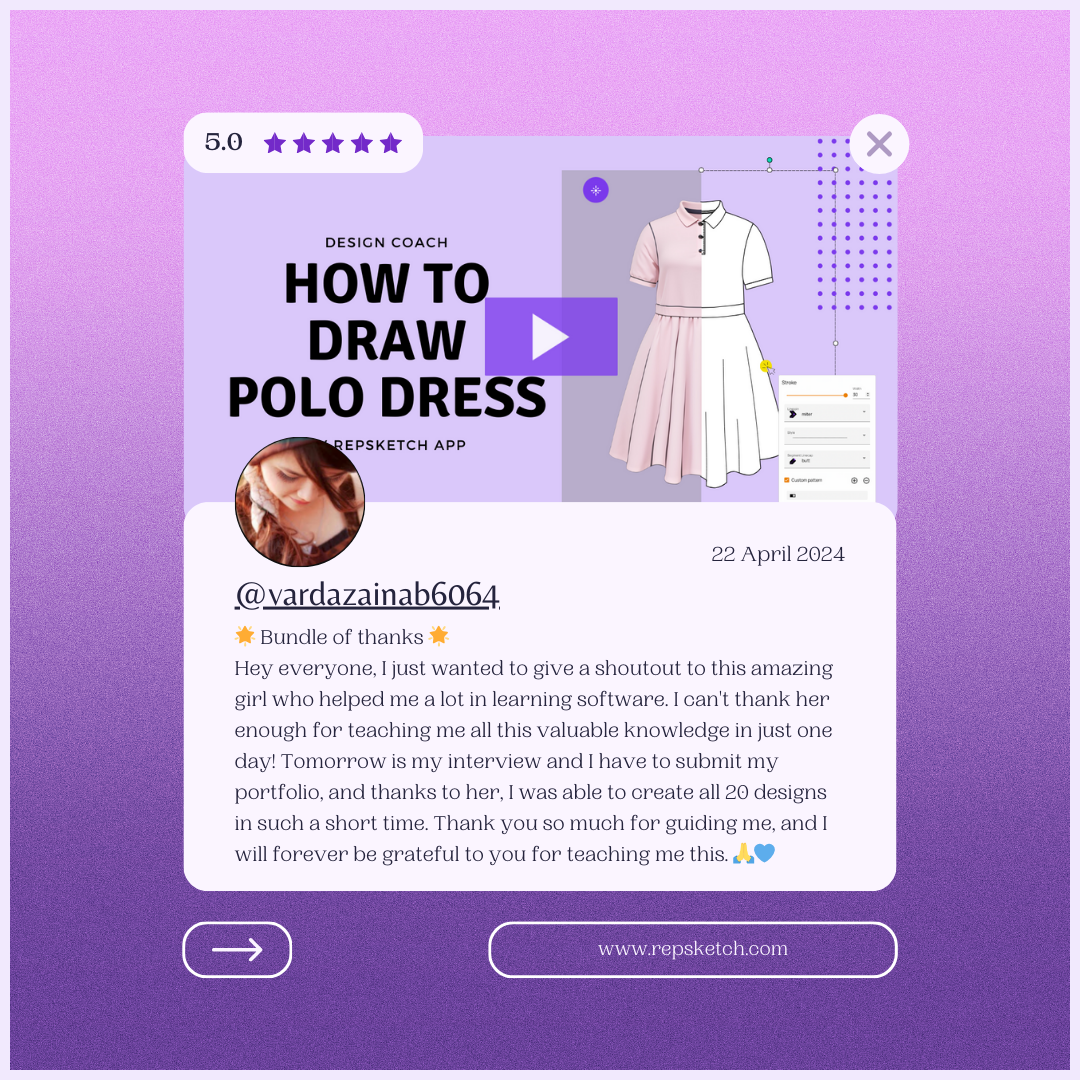
RepSketch is revolutionizing the fashion industry with its open-source, community-driven model. By enabling designers to collaborate, share, and repurpose resources, it fosters innovation, sustainability, and efficiency. Join the RepSketch community today, share your designs, collaborate with creatives worldwide, and help shape the future of fashion. Visit the RepSketch website and connect in the community forums to get started.
Other basic FAQ's
1. What is an open source library in fashion, and how is it different from traditional design tools?
An open source library in fashion is a collection of freely available and modifiable design assets—like vector templates, technical sketches, and CAD files—that any designer can use or build upon. Unlike traditional design workflows, which are often siloed and proprietary, open source promotes collaboration, faster development, and standardized practices.
Learn how open source libraries are transforming fashion workflows here.
2. How can open-source design libraries help reduce time-to-market in fashion?
By reusing existing sketches and templates, designers avoid starting from scratch. This leads to faster ideation, prototyping, and approvals, significantly cutting down the product development timeline.
See how this plays out in the Benefits of Open Source Library in Fashion Industry section of this article.
3. Is it safe to use open source fashion resources from an IP (intellectual property) standpoint?
Yes, reputable platforms like RepSketch offer clear attribution, licensing frameworks, and community guidelines that protect contributors. What's more, emerging technologies like blockchain play a crucial role in making open source safer and more transparent. Blockchain allows you to trace the origin of a design, track its usage over time, and ensure proper credit is given to the original creator, all while securing data against tampering.
In fashion, blockchain is already being used for traceability and digital product passports, helping track garments from design to production and even resale. These same technologies are now being applied to digital design assets, making open source more secure, ethical, and innovation-friendly.
Learn how blockchain and product passports are building a more transparent and accountable fashion industry.
4. How does open source contribute to sustainable fashion practices?
Open source supports sustainability by reducing the need to create new digital assets for every project. By repurposing templates and designs, brands lower digital waste, reduce redundant sampling, and conserve creative energy and materials.
5. Can professional brands and manufacturers use open source tools like RepSketch?
Absolutely, RepSketch is built for professionals and supports everything from 2D sketching to 3D visualization. Brands use these tools for faster product development, better collaboration across departments, and even client-ready presentations.
Explore how RepSketch fits into modern fashion workflows here.
6. Are open source design libraries only useful for freelancers or small brands?
Not at all. While freelancers use them to save time and build portfolios, large fashion houses benefit from internal collaboration, reduced design costs, and improved standardization. Open source scales across team sizes and experience levels.
7. What are some examples of successful open source platforms in creative industries?
In fashion, RepSketch leads the charge with a growing library of community-contributed designs. In tech, GitHub powers collaborative coding. In UI design, Penpot enables shared prototyping. These platforms demonstrate how open ecosystems drive faster, smarter innovation.
The blog section on Open Source in Various Industries dives into more cross-industry examples.


